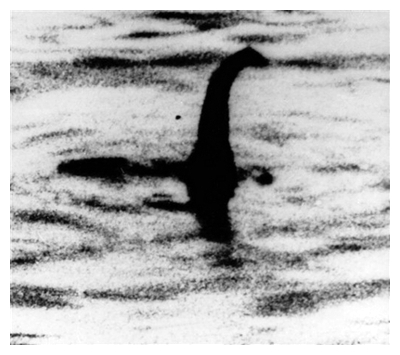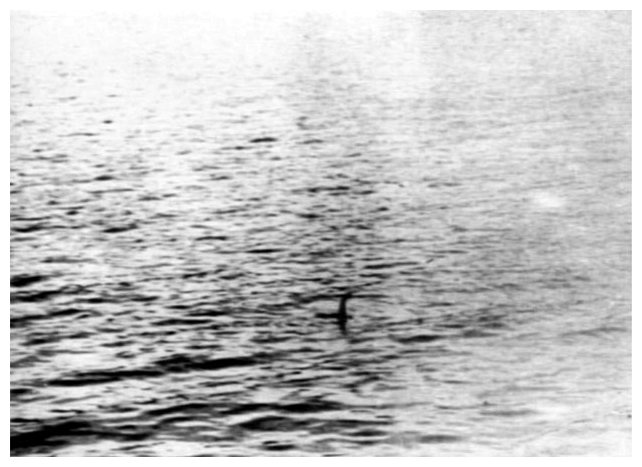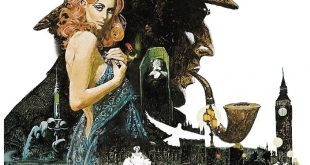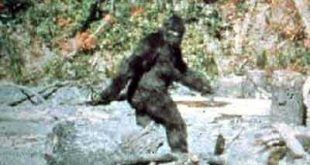 “I realised for the first time, with complete assurance, the picture was not a fake and that the Loch Ness monster was real and tangible: a living animal, or one that had been real and alive when the picture was taken in 1934.” So said the late Tim Dinsdale (a Nessie hunter who took the only seriously considered film of the monster in 1960) describing a classic photo of the infamous resident of the Scottish loch, a photo which was the inspiration for his throwing himself fully into the pursuit of the monster, a photo now revealed to be a hoax. The revelation of the hoax says more about the willingness of believers to force evidence to suit their own inclinations than it does about the existence of a large creature in the loch. The photo in question is the so-called ‘Surgeon’s Photo’ supposedly taken by Lieutenant Colonel Robert Kenneth Wilson MA, MB, ChBCamb, FRCS, a gynaecologist, in early April 1934. The story goes that Colonel Wilson, co-owner of a wild-fowl shooting range close to nearby Loch Inverness, was driving northwards past Loch Ness early one morning with a friend. Stopping for a break, they noticed a commotion on the loch surface a couple of hundred metres from the shore. The friend said, “My god, it’s the monster,” and Wilson ran back to his car to retrieve a camera he had brought to take photos of birds. The camera was a quarter-plate model with a telephoto lens that uses plates with a slow fine-grain emulsion. Having made four exposures over a two-minute period, Wilson took the plates to an Inverness chemist named George Morrison for development. Wilson asked for particular care to be taken and Morrison replied, “You haven’t got the Loch Ness monster, have you?” The plates were developed the same day. The first two were blank. The famous third photo showed, “An animal’s upraised head and neck.” The fourth was a very fuzzy depiction of the head and top of the neck disappearing beneath the waves. On Morrison’s advice, Wilson sold the copyright of the third photo to the London Daily Mail which published it on the 21st of April 1934, “Thereby challenging the evasive ingenuity of the scientific community yet again.”
“I realised for the first time, with complete assurance, the picture was not a fake and that the Loch Ness monster was real and tangible: a living animal, or one that had been real and alive when the picture was taken in 1934.” So said the late Tim Dinsdale (a Nessie hunter who took the only seriously considered film of the monster in 1960) describing a classic photo of the infamous resident of the Scottish loch, a photo which was the inspiration for his throwing himself fully into the pursuit of the monster, a photo now revealed to be a hoax. The revelation of the hoax says more about the willingness of believers to force evidence to suit their own inclinations than it does about the existence of a large creature in the loch. The photo in question is the so-called ‘Surgeon’s Photo’ supposedly taken by Lieutenant Colonel Robert Kenneth Wilson MA, MB, ChBCamb, FRCS, a gynaecologist, in early April 1934. The story goes that Colonel Wilson, co-owner of a wild-fowl shooting range close to nearby Loch Inverness, was driving northwards past Loch Ness early one morning with a friend. Stopping for a break, they noticed a commotion on the loch surface a couple of hundred metres from the shore. The friend said, “My god, it’s the monster,” and Wilson ran back to his car to retrieve a camera he had brought to take photos of birds. The camera was a quarter-plate model with a telephoto lens that uses plates with a slow fine-grain emulsion. Having made four exposures over a two-minute period, Wilson took the plates to an Inverness chemist named George Morrison for development. Wilson asked for particular care to be taken and Morrison replied, “You haven’t got the Loch Ness monster, have you?” The plates were developed the same day. The first two were blank. The famous third photo showed, “An animal’s upraised head and neck.” The fourth was a very fuzzy depiction of the head and top of the neck disappearing beneath the waves. On Morrison’s advice, Wilson sold the copyright of the third photo to the London Daily Mail which published it on the 21st of April 1934, “Thereby challenging the evasive ingenuity of the scientific community yet again.”
Colonel Wilson refused to expand upon the bare facts of his story and refused to estimate the size of the object. In fact he never claimed that he had photographed the monster, all he ever said was that he had photographed an object moving in the waters of Loch Ness. The publication of the photo immediately created controversy, with believers claiming it was absolute proof of Nessie’s existence (the public’s interest in Nessie had been piqued since the previous year) and skeptics calling it a hoax, some even suggesting it was taken in a London pond. The photo, to be honest, is not very clear, showing a somewhat fuzzy ‘head and neck’ in silhouette, with a partial reflection distorted by the disturbed water around the creature. It was normally published somewhat enlarged, showing less of the surrounding water than the now-lost original plate. Nevertheless Dinsdale, after studying the photo many times from all angles and holding the photo at arm’s length, said he could discern “A tiny knob or protrusion” on top of the head, complying with independent eye-witness accounts of horn-like stumps, and a second set of rippling circles behind the bulk of the monster, indicating disturbance caused by a further part of the animal. It was this moment of epiphany which gave rise to his conviction quoted at the top of this article. On the other hand, skeptics dismissed the photo as an outright hoax, some insisting it was the tail of an otter or a diving bird or the branch of a tree. The detached and entirely objective approach of Colonel Wilson was commended. He made no wild claims and, as one would expect from a professional scientific man of standing, he merely reported what had happened as far as his recollection would allow. Having done that he wished to have no part in the wrangling which inevitably followed every photo purporting to show Nessie, but Wilson had more than ‘professional’ reasons to remain silent.
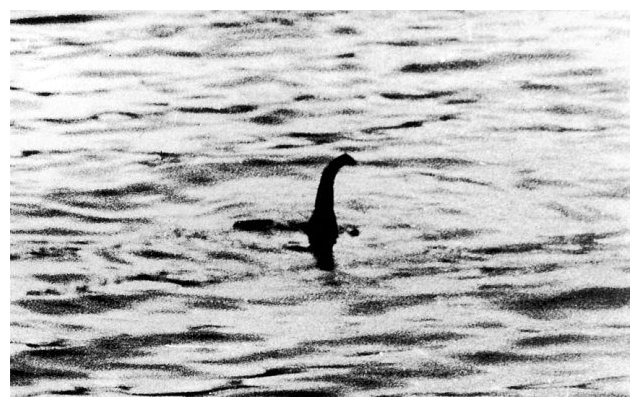 On the 13th of March 1994 the London Sunday Telegraph published a story which claimed that the last of several men involved with hoaxing the photo had made a confession before he died in November 1993. Both David Martin, a former zoologist with the Loch Ness scientific project, and fellow researcher Alastair Boyd witnessed the confession. According to the story and Christian Spurling‘s confession, the Daily Mail had hired Marmaduke Wetherell (filmmaker, big game hunter and Spurling’s stepfather) to find the monster. Wetherell asked Spurling to make him a monster, which he did using ‘plastic wood’ attached to a 35cm long toy tin submarine bought for a few shillings from a Woolworths department store in the London suburb of Richmond. Nessie was made in just eight days. The finished monster was 30cm tall and about 45cm long with a lead keel to give it extra stability. Wetherell’s son Ian Wetherell took the photo on a quiet day on the loch. A friend recommended Colonel Wilson as a front-man, no doubt because of his impeccable scientific credentials and detachment. In fact Wetherell was hired by the Daily Mail the year before, in 1933, to track down Nessie. After only four days Wetherell’s team came across footprints on the south shore of the loch. Plaster casts were made and sent off to the British Museum Of Natural History, which reported that they were unable to find any significant difference between these impressions and those made by a hippopotamus. As it turned out, the footprints were made by using a local’s hippo-foot umbrella stand, which probably explains why all the footprints were the same foot. On January 15th 1933, Wetherell reported seeing something while cruising the loch, but dismissed it as a large grey seal. The following year he resigned his Fellowship of the Royal Geographical Society, and no more was heard of him until the 1994 report. No-one ever seemed to make the connection between the Daily Mail’s sponsoring of Wetherell, it’s apparently innocent publishing of his claims, and the same newspaper’s later publication of the Surgeon’s Photo.
On the 13th of March 1994 the London Sunday Telegraph published a story which claimed that the last of several men involved with hoaxing the photo had made a confession before he died in November 1993. Both David Martin, a former zoologist with the Loch Ness scientific project, and fellow researcher Alastair Boyd witnessed the confession. According to the story and Christian Spurling‘s confession, the Daily Mail had hired Marmaduke Wetherell (filmmaker, big game hunter and Spurling’s stepfather) to find the monster. Wetherell asked Spurling to make him a monster, which he did using ‘plastic wood’ attached to a 35cm long toy tin submarine bought for a few shillings from a Woolworths department store in the London suburb of Richmond. Nessie was made in just eight days. The finished monster was 30cm tall and about 45cm long with a lead keel to give it extra stability. Wetherell’s son Ian Wetherell took the photo on a quiet day on the loch. A friend recommended Colonel Wilson as a front-man, no doubt because of his impeccable scientific credentials and detachment. In fact Wetherell was hired by the Daily Mail the year before, in 1933, to track down Nessie. After only four days Wetherell’s team came across footprints on the south shore of the loch. Plaster casts were made and sent off to the British Museum Of Natural History, which reported that they were unable to find any significant difference between these impressions and those made by a hippopotamus. As it turned out, the footprints were made by using a local’s hippo-foot umbrella stand, which probably explains why all the footprints were the same foot. On January 15th 1933, Wetherell reported seeing something while cruising the loch, but dismissed it as a large grey seal. The following year he resigned his Fellowship of the Royal Geographical Society, and no more was heard of him until the 1994 report. No-one ever seemed to make the connection between the Daily Mail’s sponsoring of Wetherell, it’s apparently innocent publishing of his claims, and the same newspaper’s later publication of the Surgeon’s Photo.
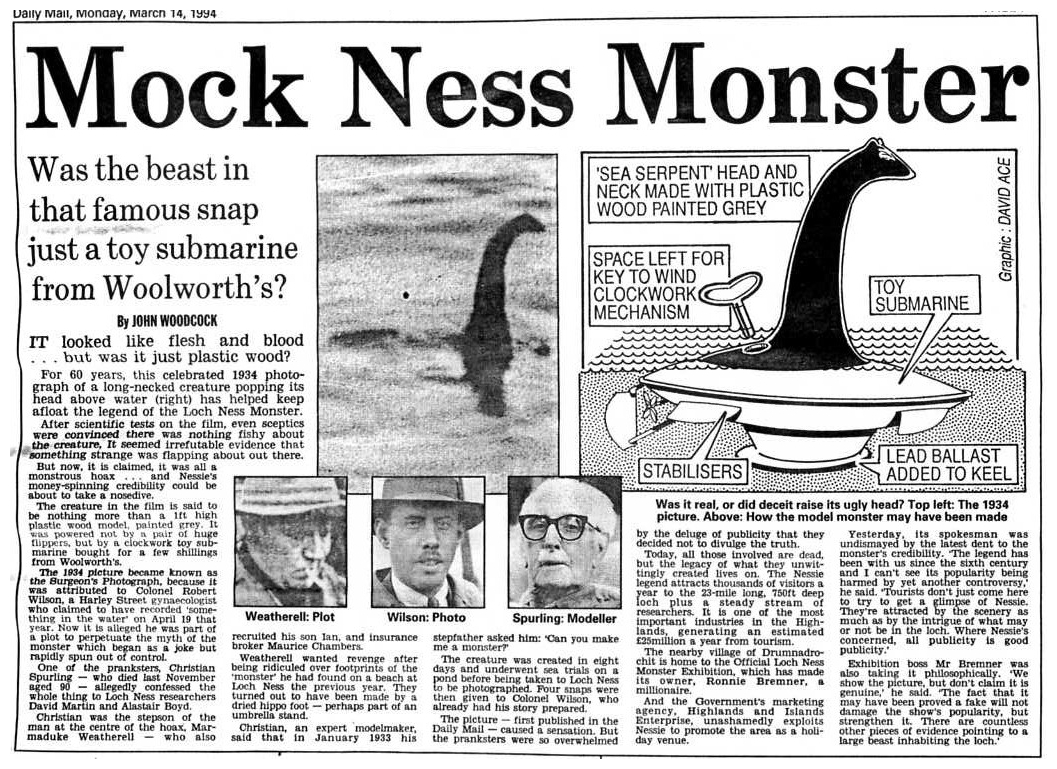 Neither did anyone seem to notice the date on which the photo was taken. Although clearly identified in The Loch Ness Monster And Others by Rupert Gould (published 1934), the date was not mentioned again until the mid-seventies in The Monsters Of Loch Ness by Roy Mackal – the 1st of April 1934. April Fool’s Day joke or not, apparently the perpetrators of the hoax were overwhelmed by the huge fuss their trick aroused and were afraid to confess, a reaction shared by many hoaxers. Nevertheless, their photo remained in active circulation for another eight decades, becoming the most famous photo on the subject and reprinted almost without fail with every subsequent report or book. The history of the Surgeon’s Photo is a classic cautionary tale for all involved in the search for proof of the paranormal, be it unknown animals, UFOs, psychic powers, whatever, and a particular warning for the use of photographic evidence. Supporters of the Surgeon’s Photo stressed the impeccable scientific credentials and demeanor of the supposed photographer. Their attitude amounts to nothing less than ironic, naive and probably hypocritical snobbery. They also stressed that the photo had not been tampered with, dismissing the possibility that it could be a real photo of a fake monster. Some, clearly prone to wishful thinking, claimed to see a ‘knob’ on top of the creatures head. Such detail is extremely indistinct in the photo, if not totally nonexistent. The ripples circling out from the monster seem inordinately big, even for such a large and bulky creature as Nessie is often described to be. This was the view of current (legitimate) investigators of the loch’s natural history who claimed, after the hoax’s exposure, that for the last en years no-one had given credence to the photo for this very reason. But what seems obvious to some people is obviously invisible to others, particularly those with a predisposition to believe. In the current age of computer-manipulated imagery, photographic evidence becomes entirely shaky: An original photo can be scanned, enhanced to an almost infinite degree and a new, apparently untouched, negative produced.
Neither did anyone seem to notice the date on which the photo was taken. Although clearly identified in The Loch Ness Monster And Others by Rupert Gould (published 1934), the date was not mentioned again until the mid-seventies in The Monsters Of Loch Ness by Roy Mackal – the 1st of April 1934. April Fool’s Day joke or not, apparently the perpetrators of the hoax were overwhelmed by the huge fuss their trick aroused and were afraid to confess, a reaction shared by many hoaxers. Nevertheless, their photo remained in active circulation for another eight decades, becoming the most famous photo on the subject and reprinted almost without fail with every subsequent report or book. The history of the Surgeon’s Photo is a classic cautionary tale for all involved in the search for proof of the paranormal, be it unknown animals, UFOs, psychic powers, whatever, and a particular warning for the use of photographic evidence. Supporters of the Surgeon’s Photo stressed the impeccable scientific credentials and demeanor of the supposed photographer. Their attitude amounts to nothing less than ironic, naive and probably hypocritical snobbery. They also stressed that the photo had not been tampered with, dismissing the possibility that it could be a real photo of a fake monster. Some, clearly prone to wishful thinking, claimed to see a ‘knob’ on top of the creatures head. Such detail is extremely indistinct in the photo, if not totally nonexistent. The ripples circling out from the monster seem inordinately big, even for such a large and bulky creature as Nessie is often described to be. This was the view of current (legitimate) investigators of the loch’s natural history who claimed, after the hoax’s exposure, that for the last en years no-one had given credence to the photo for this very reason. But what seems obvious to some people is obviously invisible to others, particularly those with a predisposition to believe. In the current age of computer-manipulated imagery, photographic evidence becomes entirely shaky: An original photo can be scanned, enhanced to an almost infinite degree and a new, apparently untouched, negative produced.
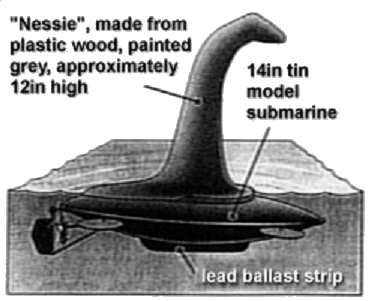 It’s for this reason we are seeing fewer photos and footage of unexplained phenomena this century than the last, despite the fact that virtually everyone in the world now carries a camera in their phone. Of course, there are still eye-witness reports to be dealt with, but these, by their nature, are intangible and prone to innocent and ingenuous enhancement of their own, as any friend of a fisherman will tell you. The first feature film to deal with Nessie was The Secret Of The Loch (1934) directed by English filmmaker Milton Rosmer, a mildly amusing comedy starring a giant iguana, but the monster’s movie appearances were rare until the sixties with What A Whopper (1961), Seven Faces Of Dr Lao (1964) and The Private Life Of Sherlock Holmes (1970) in which the monster is revealed to be a miniature submarine being tested by the British government. The seventies saw the ‘Mysterious Monsters’ boom – aliens had built the pyramids, abominable snowmen were breeding like rabbits, and Nessie was an long-extinct dinosaur, making the Surgeon’s Photo even more famous. The eighties saw more movies like The Loch Ness Monster (1981) by Larry Buchanan (Worst. Director. Ever.), Das Monster Von Loch Ness (1985) from West Germany and, one of my personal favourites, Amazon Women On The Moon (1987), with a parody of Believe It Or Not! declaring that Jack The Ripper was actually the giant Nessie (in matching giant deerstalker hat and cape). The monster’s movie appearances have been rare since then, but there are a few exceptions. The overly sentimental Loch Ness (1996) starring Ted Danson, the lame creature-feature Loch Ness Terror (2001), and the terrific mockumentary Incident At Loch Ness (2004) by Werner Herzog.
It’s for this reason we are seeing fewer photos and footage of unexplained phenomena this century than the last, despite the fact that virtually everyone in the world now carries a camera in their phone. Of course, there are still eye-witness reports to be dealt with, but these, by their nature, are intangible and prone to innocent and ingenuous enhancement of their own, as any friend of a fisherman will tell you. The first feature film to deal with Nessie was The Secret Of The Loch (1934) directed by English filmmaker Milton Rosmer, a mildly amusing comedy starring a giant iguana, but the monster’s movie appearances were rare until the sixties with What A Whopper (1961), Seven Faces Of Dr Lao (1964) and The Private Life Of Sherlock Holmes (1970) in which the monster is revealed to be a miniature submarine being tested by the British government. The seventies saw the ‘Mysterious Monsters’ boom – aliens had built the pyramids, abominable snowmen were breeding like rabbits, and Nessie was an long-extinct dinosaur, making the Surgeon’s Photo even more famous. The eighties saw more movies like The Loch Ness Monster (1981) by Larry Buchanan (Worst. Director. Ever.), Das Monster Von Loch Ness (1985) from West Germany and, one of my personal favourites, Amazon Women On The Moon (1987), with a parody of Believe It Or Not! declaring that Jack The Ripper was actually the giant Nessie (in matching giant deerstalker hat and cape). The monster’s movie appearances have been rare since then, but there are a few exceptions. The overly sentimental Loch Ness (1996) starring Ted Danson, the lame creature-feature Loch Ness Terror (2001), and the terrific mockumentary Incident At Loch Ness (2004) by Werner Herzog.
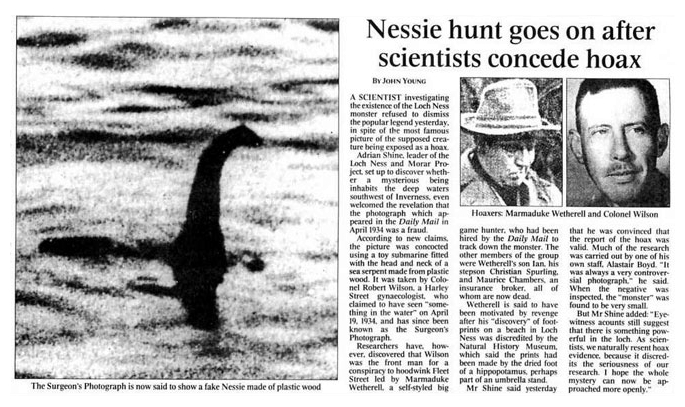 In The Water Horse: Legend Of The Deep (2007) a young boy discovers and hatches an egg belonging to the legendary Celtic creature and suggests the Surgeon’s Photo was not really a hoax but a staged re-enactment of a genuine sighting. In a way, it’s sad to lose an icon of the age. The Surgeon’s Photo truly was a classic, not of the ‘real’ monster as it turns out, but perhaps our wishful thinking for what we would like to think exists there. What it clearly represents is how our wishes can run away with us, leading us to see what is not there, and to characterise our wishes as reality. In the future, as much as in the past, we would be advised to apply some common sense and commendable detachment before heading for the deep end of the loch. Further reading might include The Loch Ness Monster And Others (1934) by Rupert Gould, The Loch Ness Story (1975) by Nicholas Witchell, The Monsters Of Loch Ness (1975) by Roy Mackal, and The Loch Ness Mystery Solved (1983) by Ronald Binns. It’s vitally important that you join me for next week’s edition of Horror News, because an old gypsy woman told me that if you don’t read all my reviews from now on, the entire world will be destroyed. Normally I’m highly skeptical of such claims, but she was just so certain, I feel we’d best not take the risk. So enjoy your week and remember, the survival of the entire world depends on you. Toodles!
In The Water Horse: Legend Of The Deep (2007) a young boy discovers and hatches an egg belonging to the legendary Celtic creature and suggests the Surgeon’s Photo was not really a hoax but a staged re-enactment of a genuine sighting. In a way, it’s sad to lose an icon of the age. The Surgeon’s Photo truly was a classic, not of the ‘real’ monster as it turns out, but perhaps our wishful thinking for what we would like to think exists there. What it clearly represents is how our wishes can run away with us, leading us to see what is not there, and to characterise our wishes as reality. In the future, as much as in the past, we would be advised to apply some common sense and commendable detachment before heading for the deep end of the loch. Further reading might include The Loch Ness Monster And Others (1934) by Rupert Gould, The Loch Ness Story (1975) by Nicholas Witchell, The Monsters Of Loch Ness (1975) by Roy Mackal, and The Loch Ness Mystery Solved (1983) by Ronald Binns. It’s vitally important that you join me for next week’s edition of Horror News, because an old gypsy woman told me that if you don’t read all my reviews from now on, the entire world will be destroyed. Normally I’m highly skeptical of such claims, but she was just so certain, I feel we’d best not take the risk. So enjoy your week and remember, the survival of the entire world depends on you. Toodles!
 Horror News | HNN Official Site | Horror Movies,Trailers, Reviews
Horror News | HNN Official Site | Horror Movies,Trailers, Reviews
